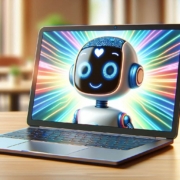The workforce of today is more diverse than ever before. It consists of people from diverse backgrounds, cultures, and genders, and from different generations. According to the U.S. Bureau of Labor Statistics, as of 2021 there are five generations of workers and this can bring many benefits to organizations, such as increased creativity, innovation, and productivity. However, it can also pose some unique challenges for employers and managers who need to manage and motivate a multigenerational workforce especially with their acceptance of technology and AI (Artificial Intelligence) is no different.
- Silent Generation (Born 1928-1945): Members of the Silent Generation tend to report being significantly less knowledgeable about AI [14]. They are slower to adapt to major technological changes [15].
- Baby Boomers (Born 1946-1964): Boomers are more skeptical about AI. Only 38% of Boomers believe AI will have a positive impact on their line of work [1]. They are selective in the use of new and emerging technologies [4] and are less enthusiastic about AI [3].
- Generation X (Born 1965-1980): Gen X is mixed in their acceptance of AI. 45% of Gen X members believe AI will have a positive impact on their line of work [1]. However, they are also less enthusiastic about AI compared to younger generations [10].
- Millennials (Born 1981-1996): Millennials are more optimistic about AI. 62% of Millennials believe AI will have a positive impact on their line of work [1] [13]. They are already using AI tools at work in a variety of use cases [1].
- Generation Z (Born 1997-2012): Gen Z is expected to be the most exposed to AI and is likely to actively utilize AI in their work [10]. They are also concerned about the ethical and privacy issues related to AI [11].
Please note that these are general trends and individual attitudes towards AI can vary. Also, AI acceptance can and will change over time as technology evolves.
Sources:
- AI and longevity – Massachusetts Institute of Technology
- Trust in Artificial Intelligence: Global Insights 2023 – KPMG
- The AI Generation Gap: Millennials Embrace AI, Boomers Are … – PCMag
- From Boomers To Gen Z: How Different Generations Adapt And … – Epsilon
- Who’s Really on Board with AI: Youngsters or Boomers?”
- Gen Z Will Shape The Age Of AI – Forbes
- The AI Generation Gap: Millennials Embrace AI, Boomers Are Skeptical
- Emotional AI and gen Z: The attitude towards new technology and its …
- Why Gen X and boomers stand to benefit from the use of AI in the … – MSN
- The AI Generation Gap: Millennials Embrace AI, Boomers Are … – PCMag
- The AI Generation Gap: Millennials Embrace AI, Boomers Are Skeptical
- Gen Z students worry about AI, student debt, and careers
- GenZ embraces ‘human machine symbiosis’ as 72% believe AI understands them better than anyone: Cheil report
- AI skills can help you land a job or promotion faster—especially for Gen Z, says new research
- Gen Z AI: The Rising Generation’s Connection with Artificial …
- Acceptance of Generative AI in the Creative Industry: Examining the …
- Trust in AI tools like ChatGPT is high among Gen Z — but Gen X and …










